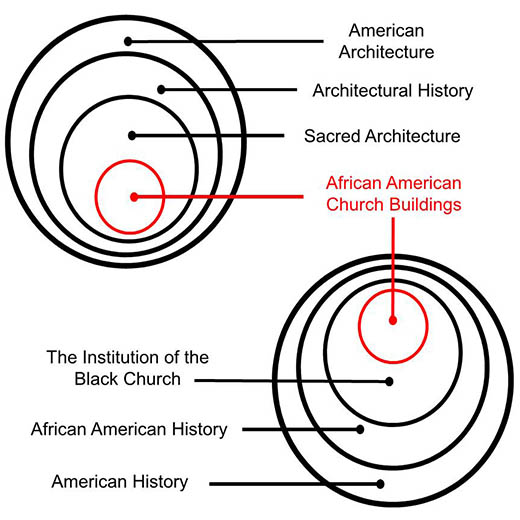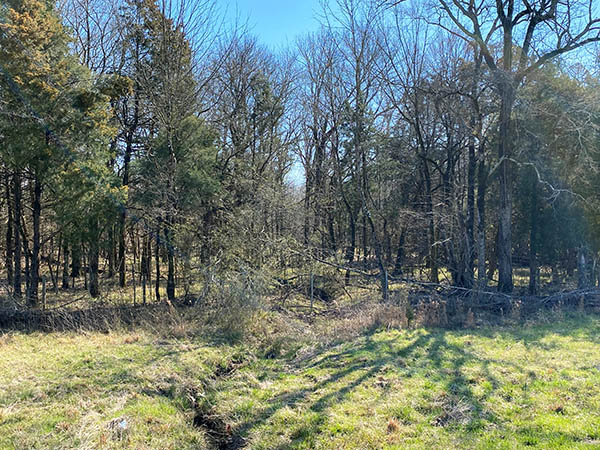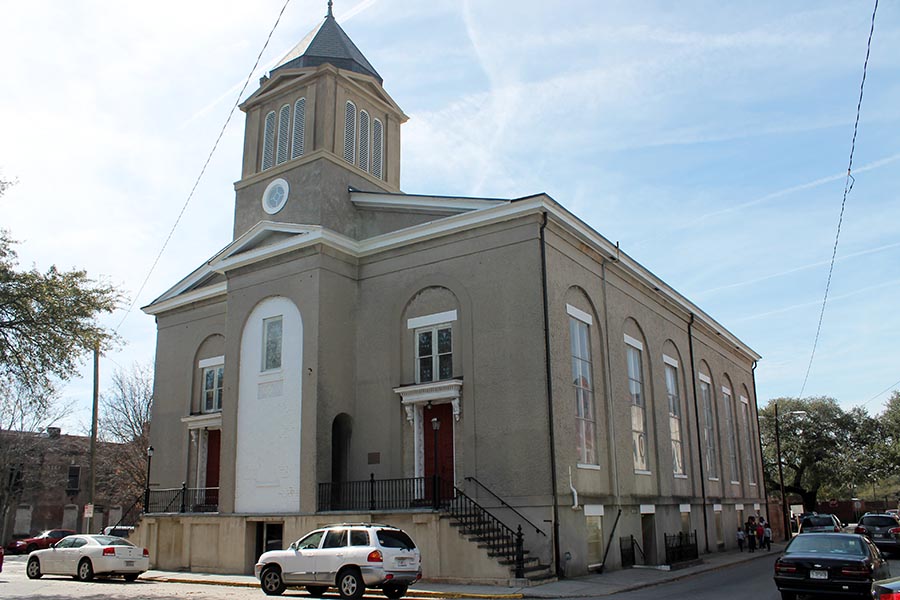PART ONE OF TWO
This little light of mine,
I’m gonna let it shine,
Let it shine, let it shine, let it shine
This refrain was a familiar one in the church house where I grew up. Church elders teaching Sunday School taught little ones this simple song about inner strength and faith. By the mid-twentieth century, this song would also become a powerful expression of activism and defiance in the fight against Jim Crow and segregation in the United States. Both contexts of this song—seen through the eyes of a child or a civil rights marcher—would connect generations of people who shared the calm and secure space created in their church building while living through turbulent and changing times.
The institution of the Black church is generally known for two things: the people and the events that constitute their history. There has been little discourse on the actual church buildings which housed the people and hosted their events. This article is the first of two which shall introduce, through an architectural and socio-cultural lens, the origins and design of early African American church buildings constructed between 1800 and 1920.1
Historical beginnings of the Black Church
One of the earliest documented studies of the institution of the Negro church and its architecture is the book The Negro Church, written by W.E.B. DuBois. Published in 1903, the book was the first full-length treatment of the Black church in the United States, developing a sociological survey of Black religious life and the experiences of the Negro community at the turn of the twentieth century. The book begins with a brief description of primitive African religion and how important religious expression is to Africans. DuBois documented that religious belief and expression was an enduring element that allowed Africans to survive the horrors of the Middle Passage, the transatlantic slave trade, and the syncretization of their various religious beliefs to the exposure to Christianity in the context of chattel slavery in the United States.
The book also chronicles the state of the Negro church in America at the turn of the twentieth century by documenting the number of congregations by state, population counts of people active within various denominations (i.e., Baptist, African Methodist Episcopal, Colored Methodist Episcopal, etc.) and the value of church property. It is the first scholarly historical account of the Black religious experience in the United States, as well as the first empirical study of religion to be conducted at a Black college or university and to be administered and led by Black scholars.2 As an example of scholarly work, DuBois begins documenting the early development of the Black church in America. Tracing the development of the Black church from its inception in the United States to his contemporary moment, DuBois concluded that throughout the four hundred years of the transatlantic slave trade, Africans brought their religious beliefs and practices to the western world. The practice of African religion, according to DuBois, had its origins in “nature worship.” This connection to nature in many West African cultures was spirit-led and did not require the presence of a church building.
The understanding of the existence of varied West African religious practices is central to a much broader goal developed by slaveholders, clergy, and other parties to support the institution of chattel slavery in America, which is the need to remove all elements of humanity from the person who is to be enslaved. Carried across the Atlantic were men and women, husbands and wives, fathers and mothers. These people carried their music, culture, religious beliefs, construction techniques, farming and hunting skills with them. They carried the memories of their families, the love for their homes, and a sense of responsibility to ensure that new generations would know who they were and what their lineage was. All of this was systematically stripped from them in order to shape workers with no agency or means to self-determination. This systematic eradication of humanity however was the subject of a debate in 1941 which questioned whether there was a lasting impact on this process, and if so, to what depth?

Graphic illustration of the intersection of African American church buildings in the context of American history and American architecture.
The Herskovits-Frazier debate in the early twentieth century centered on the process of enslavement, from the horrors of the Middle Passage to the adjustment process Africans endured upon arrival in America. Melville Herskovits was an American anthropologist noted for opening up the study of Africans and African Americans as a new field of academic research. E. Franklin Frazier was an African American sociologist whose research provided a framework of social structural issues relevant to the problems of the black community in the first half of the twentieth century. Herskovits argued that surviving evidence such as religion and song supported the persistence of African culture and religion in the New World. Frazier contended that no trace of culture and religion survived, concluding that Africans living in America would eventually become completely “Americanized” while severing all ties with their homes in Africa.
The Reverend Dr. Henry Mitchell, a professor of history and Black church studies, has weighed in on Herskovits-Frazier debate from a contemporary vantage, writing about the influence of religious beliefs on the necessity of surviving the institution of slavery. He underscores that the most important mode of survival for Africans living in the Americas may very well have been the merging of belief systems—particularly, African traditional religious doctrines as closely related to and merged with the orthodox Christian faith. The two traditions offer remarkable parallels, such as the omnipotence, justice, omniscience, and providence of God. None of these attributes of God had to be learned first in slavery. And these crossover African-Christian beliefs profoundly endured in America because they served so well to support African American psychic survival under oppression.3 Mitchell suggests that, motivated by survival, Africans brought to America found ways to blend, or syncretize, their religious beliefs with Christianity.
The Black Church in Antebellum and Post-Civil War America
By the eve of the American Civil War, the majority of slaves were American-born, and the cultural and linguistic barriers which had impeded the evangelization of earlier generations of African-born slaves had generally eroded.4 Missionaries had little success with African-born slaves because many of them never learned English well enough to understand instructions in Christianity. The enslaved Africans in America, who understood the language and the customs of whites, made better candidates for conversion.5 The religious act of survival by the enslaved born in America became an act of defiance against the preaching of white southern ministers. While trying to restrain the cruelty of masters, white ministers simultaneously hoped their evangelization would produce submissive slaves. Many Blacks testified that the white ministers, dedicated to preserving slavery, tried to promote good behavior, contentment, industry, and humility in the quarters and discouraged stealing, lying, and rebelliousness.6

Enslaved African Americans held meetings in secluded locations, such as woods, gullies, ravines and thickets, aptly called “hush” or “brush harbors.” Christopher S. Hunter
The enslaved, in turn, developed their own understanding of Christianity, which differed drastically from that of slave owners and their chosen preachers. While white ministers emphasized memorization of the Lord’s Prayer, the Ten Commandments, and various passages that highlighted obedience and submissiveness, for enslaved persons their love for church and religious services frequently derived from their love for singing, dancing, praying, and possession of the spirit, and later, when they had their own churches, preaching and drumming. There were different agendas and quite often there was a misunderstanding on the part of white preachers.7 Indeed, the enslaved community had an extensive religious life of its own, hidden from the eyes of slave owners and white preachers. Their separate meetings were made possible by several techniques devised to avoid detection, such as meeting in secluded places such as woods, gullies, ravines, and thickets, aptly called “hush” or “brush harbors.”8 A hush harbor was a place in the antebellum American South where the enslaved, under pain of death, would gather in secret to freely discover, create, and practice their own form of religion. These secret gatherings would create a new form of religious celebration that laid the foundation for the development and practice of Sunday worship services in Black churches today.
The developing Negro religious traditions and practices added to the inevitable separation by the Negro from Anglo religious traditions and practices, leading the enslaved to desire a place of their own to worship. The separation from Anglo influence also required a complete break from the deep-seated cultural, religious, and legal commitment by southern whites to control the Christian narrative and its interpretation for the enslaved. The only path open for Negroes in their pursuit of freedom of worship was to contribute to the effort to obtain freedom during the Civil War.
After the Civil War, DuBois documented the eventual separation of Black churches from white houses of worship. He attributed the creation of Negro churches to the following:
- Special missionary efforts on the part of whites
- Direct discrimination against Blacks made by the whites during divine worship
- An increase in membership that prompted congregations to divide, whereupon distinct Black churches evolved but remained under the oversight if not the exclusive control of whites9
From the 1870s to the turn of the century, the creation of many Black church congregations occurred alongside the construction of church buildings. Generally free from retaliation by slave owners, Negroes not only constructed their church buildings and used them for religious purposes but were free to develop additional uses for the buildings. Church buildings served as community meeting and social centers, havens from the daily challenges of the outside world, temporary schools until permanent structures could be built, and political halls. By the first decades of the twentieth century, the church buildings, according to author Richard Wright, had become the center of life for the Negro community.10 Many of these churches were venues for political meetings as well as planning and strategic activities. Some of the buildings became the sites of retaliatory violence against the church congregants as America entered the Civil Rights Era of the 1950s and ‘60s.
The Civil Rights Movement in the United States brought attention to many Negro church buildings through the events that they hosted and the people who visited them. Today, many of these churches have received historic landmark status and are widely revered in mainstream American and African American culture. However, there is no available documentation on the evolution and the socio-cultural (Afrocentric and Eurocentric) influences on the design and construction of these buildings. The story of African American religious and cultural life would not be complete without examining the role of church buildings in the daily life of the congregants.
These early African American church buildings express the culture, narratives, and pride of a people who labored through the human indignity of bondage, a post-Civil War and Reconstruction world, the rise of Jim Crow, and a segregationist America, to create a building type that developed into a safe haven and became a living heart to a community. The buildings represent a constructed and habitable material culture created by and for African Americans.
1 Author’s note: The terms ‘African American’ and ‘Black’ are used to describe and characterize the common ancestry of people of African descent and not in reference to the color of a person’s skin. The terms ‘Negro’ and ‘colored’ are used within appropriate historical context.
2 W.E.B. DuBois, The Negro Church (Eugene, Oregon: Cascade Books, 2011), x.
3 Henry H. Mitchell, Black Church Beginnings: The Long-Hidden Realities of the First Years (Grand Rapids, Michigan: Wm. B. Eerdmans Publishing Company, 2004), 16.
4 Albert J. Raboteau, Slave Religion: The ‘Invisible Institution’ in the Antebellum South (New York: Oxford University Press, 2004), 212.
5 Noel Leo Erskine, Plantation Church: How African American Religion was Born in Caribbean Slavery (New York: Oxford University Press, 2014), 118.
6 Ibid., 115.
7 Ibid., 117.
8 Raboteau, Slave Religion, 215.
9 DuBois, The Negro Church, 41.
10 Richard Wright, 12 Million Black Voices (New York: Basic Books, 1941), 131.

